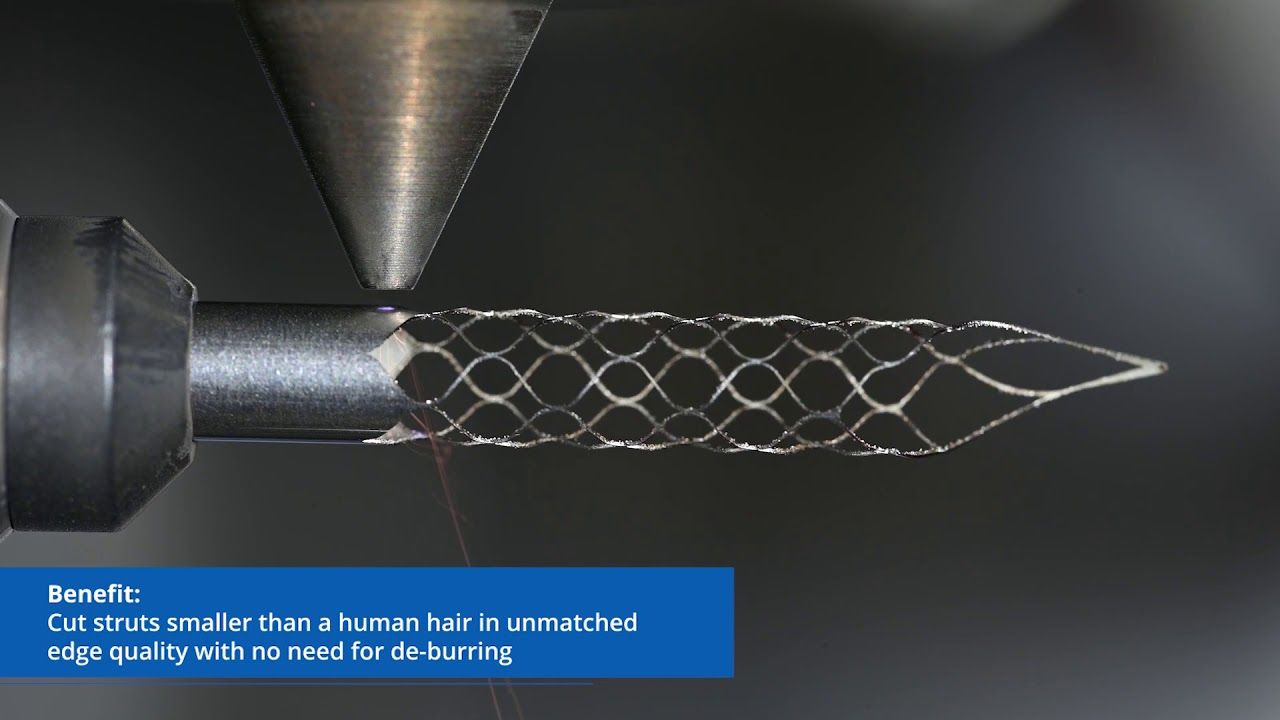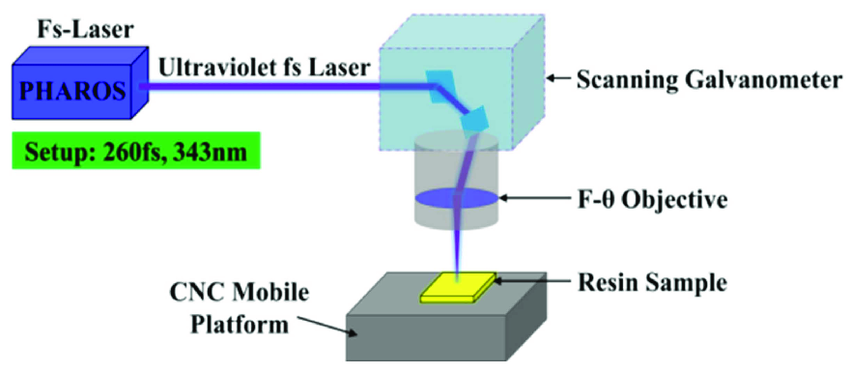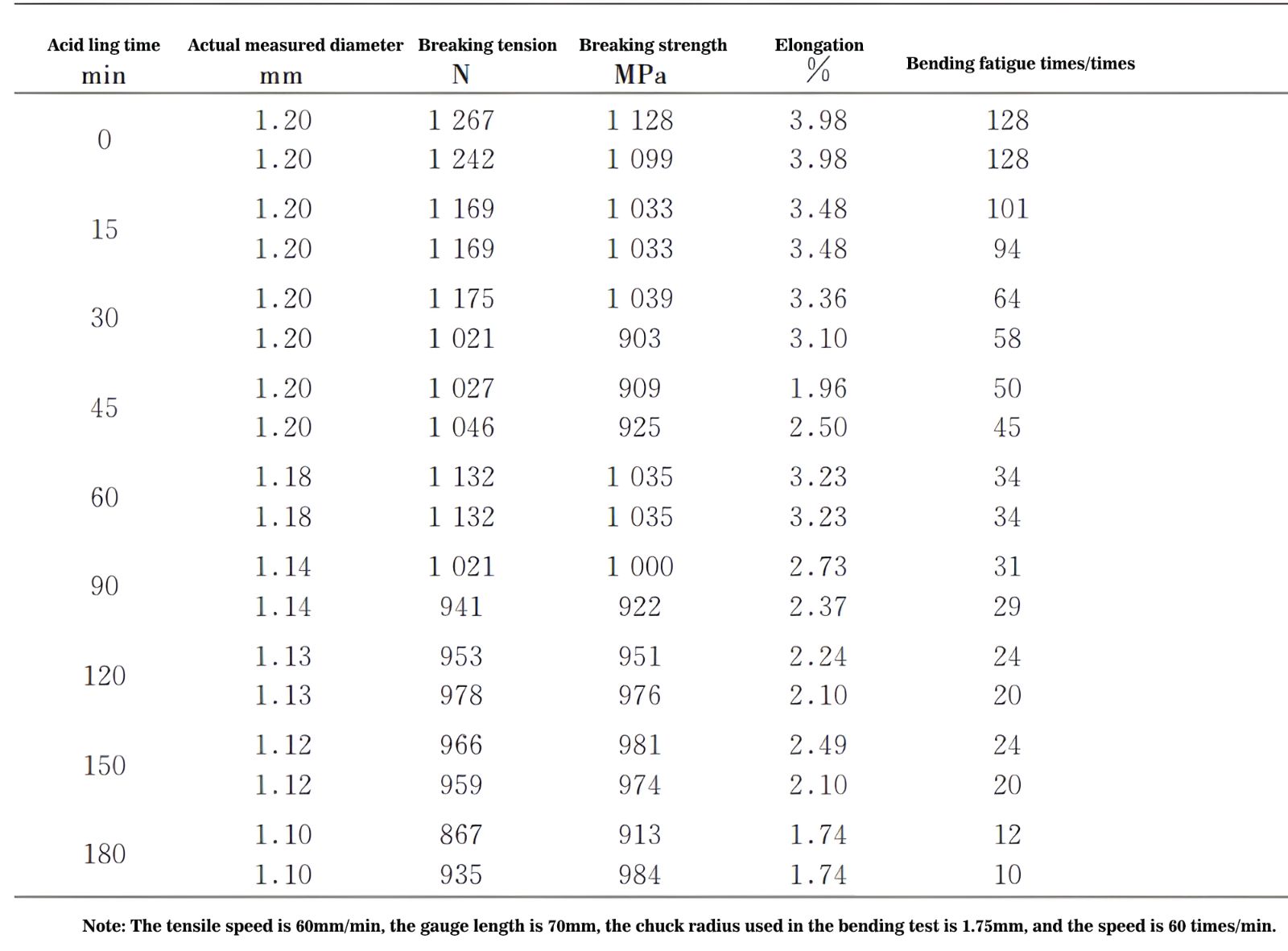Explore the comprehensive guide to Nitinol vascular stent production methods and techniques. Learn about laser cutting, heat treatment, and electrolytic polishing processes.


Currently, vascular diseases are usually treated by endovascular intervention or surgery, but endovascular intervention has become the main means of treatment for this disease due to the limited types of vessels that can be treated by surgery, as well as the disadvantages of high trauma and serious complications.
Endovascular interventions can be dilated using stents or balloons, for example. Implanted stents can be categorized into balloon-expandable stents and self-expandable stents according to their principles, and the structure of a balloon-expandable stent is shown in Figure 1.

Fig. 1 Balloon-expandable stent
The balloon-expandable stent is a percutaneous puncture technique in which a stent pre-installed on a balloon catheter is transported along the guidewire with the balloon to the site of the vascular lesion, and then the balloon is pressurized to expand the stent to support the diseased vessel. When the stent expands to the size of the vessel diameter, the balloon is released and the catheter is withdrawn, leaving the stent in place to keep the vessel open.
Compared with balloon-expandable stents, self-expandable stents do not require an external force to be applied through balloon expansion at the vascular lesion, as shown in Figure 2. The stent is first rolled to a small diameter at a low temperature and then delivered to the lesion site. When the ambient temperature increases from room temperature to body temperature of 37°C, the stent expands by relying on the material's own temperature sensitivity to support the diseased vessel.

Fig. 2 Self-expanding sent
Commonly used stent molding methods include laser cutting and braiding, etc. Different molding methods may have different effects on the geometry and performance of the stent. Laser cutting technology is widely used in the manufacture of vascular stents due to its advantages of non-contact, fast manufacturing speed, high molding accuracy and low cost, and is currently the most common stent forming method (Figure 3).

Fig. 3 The process of laser cutting stents
Laser cutting is achieved by focusing a high-energy laser beam and irradiating it on the surface of the workpiece, causing the material in the irradiated area to rapidly melt and vaporize, while blowing away the molten material with the help of a speedy gas stream coaxial to the laser beam.
Braiding is a low-cost, continuous manufacturing method with no material loss during the process. Two or more wires are braided around a metal mandrel to form a three-dimensional structure (Figure 4) The metal wires cross each other but do not interlock.

Fig. 4 Braided Vascular Stents
With shape memory, super elasticity and good biocompatibility, Ni-Ti alloy has gradually become one of the main raw materials for vascular stents (its characteristics are shown in Fig. 5).

Fig. 5 Properties of nickel-titanium alloy
The process flow of Ni-Ti alloy stent machining is shown in Figure 6 below:

Fig. 6 Nickel-titanium alloy stent machining process
The schematic diagram of the laser cutting machine for cutting stents is shown in Figure 7. The laser beam is first generated by the laser generator during the cutting process, and the direction of the laser beam is changed by the reflector. When the beam is transmitted to the nozzle nearby, the spot will be converged. Laser nozzle in the cutting role more, on the one hand, play a role in protecting the focusing mirror by cutting residue damage, on the other hand, control the cutting gas flow field and size, which makes the laser beam easier to form the ideal spot.
The laser beam hits the surface of the pipe at an instantaneous temperature of several thousand degrees Celsius, causing instantaneous melting in the near spot area. During the cutting process the gas circuit of the cutting machine provides an auxiliary rare gas, which blows off the Nitinol droplets that have reached the melting point, thus removing the material, and in addition to this the auxiliary gas also reduces the surface temperature during the cutting process.

Fig. 7 Cutting machine working principle diagram and cutting area mechanism diagram
The essence of laser cutting nickel-titanium alloy cardiovascular stent is: when the tube absorbs the energy of the light spot, the part of the tube that is subject to the action of the light spot reaches its own vaporization point or melting point, and breaks away from the tube in the form of plasma or melt.
Among them, according to the light spot carrying power density level, nickel-titanium alloy cardiovascular stent laser cutting is mainly divided into:
(1) vaporization cutting: vaporization cutting refers to the spot power density level higher than 108W/cm², the material absorbs energy to reach its own vaporization point, the material in the form of plasma splash out of the material surface cutting mode.
(2) melting cutting: melting cutting refers to the spot power density level higher than 107W/cm², the material reaches its own melting point in the form of melt out of the slit cutting method.
(3) Oxygen-assisted cutting: Oxygen cutting refers to the spot power density level of about 106W/cm², at this time the removal of materials relying on oxygen and laser beam acting on the material, nickel-titanium alloy tubing through the form of combustion to achieve the purpose of material removal.
And according to the conditions of the type of laser generated is divided into CO2 laser cutting, Nd:YAG laser cutting, and fiber laser cutting. Fiber laser cutting is a new type of laser cutting method developed in recent decades, which has the advantages of good beam quality and long service life in industrialized environment, etc. However, due to the fiber pulsed laser cutting is essentially "thermal" processing, so the spot energy transfer in the process is one of the key factors affecting the quality of the stent cutting. One of the key factors affecting the cutting quality of the stent, such as Figure 8 for the fiber pulsed laser cutting schematic diagram.

Fig. 8 Schematic diagram of fiber pulsed laser cutting
On the other hand, stent laser cutting according to the continuity of the laser is divided into continuous laser cutting and pulsed laser cutting. At present, the laser processing of cardiovascular stents are all cut by pulsed laser, because compared with the continuous laser, there is a time interval between two adjacent laser beams of pulsed laser, which facilitates the discharge of waste generated during the cutting process, thus improving the cutting performance of the stents.
In recent years, the technology of ultrashort femtosecond (fs) class lasers has been introduced, which generate laser pulses that do not leave thermal effect fingerprints on the part, which means that femtosecond laser is a cold machining process.
The femtosecond laser is an ultrashort pulsed laser, with which Nitinol brackets are processed. Due to the extremely short pulse width of the femtosecond laser, which is only 10-15 seconds, the laser interacts with the material in a very short period of time and avoids thermal diffusion, thus eliminating the influence of the melting zone, the heat-affected zone, the impact wave, and many other effects on the surrounding material, as well as thermal damage. These advantages improve the precision of laser cutting. A schematic diagram of the femtosecond laser processing system is shown in Figure 9.

Fig. 9 Schematic diagram of femtosecond laser processing system
After laser cutting, the stent is still in the state of semi-finished products, the inner surface and the side of the cut seam after cutting are often accompanied by slag, heat-affected zone and recast layer, and the cut seam is more undulating and rougher. Usually the semi-finished products need to go through a series of processes such as heat treatment, sand blasting, pickling, tempering and electrochemical polishing before they can be put into use as finished products.
Because laser processing is thermal processing, it will cause thermal damage to the surface of the stent and form a small amount of slag and oxide skin (see Figure 10), of which the average thickness of the heat-affected zone and recast layer is about 8μm.

Fig. 10 Microscopic morphology of vascular stent after laser processing
The change trend of tensile strength of nitinol alloy stents obtained under different heat treatment conditions is illustrated in Figure 11a. It can be observed from the graph that the mechanical properties of nitinol alloy stents obtained through heat treatment at 400°C and 450°C exhibit significant fluctuations with increasing heat treatment time. In contrast, the tensile strength of nitinol alloy stents obtained under heat treatment temperatures of 500°C and 550°C shows a relatively stable trend over time. Moreover, with the increase in heat treatment time, the tensile strength of nitinol stents gradually decreases.

Fig. 11 Tensile strength of nickel-titanium wires with different heat treatment processes
Analyzing the stress-strain curves of nitinol alloy under different heat treatment conditions at 500°C and 550°C (as shown in Figures 11b and 12), various parameters such as upper and lower plateau stresses, residual strain, elastic stored energy, and elastic stored energy efficiency can be extracted. From Figures 11 and 12, it can be observed that specimens with heat treatment times of 5 minutes and 10 minutes exhibit obvious upper and lower plateau stresses, with minimal residual strain, indicating martensitic phase transformation and reverse transformation, thus demonstrating stable nonlinear superelasticity. However, between 10 minutes and 20 minutes, there is a sudden increase in residual strain with the extension of heat setting time. This indicates that higher heat treatment temperatures and longer treatment times can to some extent affect the mechanical properties of nitinol alloy stents.

Fig. 12 Stress-strain curve at 550°C
Sandblasting is an effective method for removing dirt, oxides, rust, burrs, and other surface imperfections from bracket surfaces, ensuring they are smooth and defect-free for subsequent coating or treatment applications. Following sandblasting with aluminum oxide, there are several advantages to subsequent glass bead blasting: it allows for achieving radii at outer and inner diameter corners while requiring minimal additional material removal. The size of the radii can be effectively controlled as it depends on the size and velocity of the glass beads. This enables precise control over areas of the bracket with additional radii.

Fig. 13 Unblasted stent surface

Fig. 14 Sandblasted stent surfaces
Mechanical surface processing contributes to extending the fatigue life of the brackets. Glass bead abrasives are typically used in shot blasting applications that require strict tolerances. Blasting bracket surfaces with glass beads does not remove any material or removes negligible amounts. The size of the glass beads is crucial, with larger beads having rounder edges. There are typically three sizes of glass beads available: 35, 50, and 100. Testing samples with each size of glass beads yields corresponding results.

Fig. 15 Glass bead blasting
During the production and processing of Nitinol vascular stents, laser engraving of the tubing is required, which will generate a black oxide layer and molten debris on its surface, thus affecting the surface smoothness of the stent. These molten slag and oxidized layer will stimulate intimal hyperplasia after the vascular stent is implanted into the human body, which increases the risk of restenosis, so it is necessary to acid wash to remove the oxidized layer and debris from the surface of the stent after the stent is molded.
However, the process of removing the oxidized skin of Ni-Ti alloy vascular stent by pickling will cause "hydrogen embrittlement" of the material, and the longer the pickling time, the greater the harm to the material, so it is necessary to reasonably control the pickling time, such as Fig. 16 from which it can be seen that the longer the pickling time, the longer the diameter of the actual diameter decreases, the breaking tensile force decreases, the strength decreases slightly, and the number of fatigue times of bending decreases. Therefore, the pickling time is too long will make the material plasticity, toughness deterioration, when the pickling time more than 2h after the pickling that is too pickling.

Fig. 16 Values of mechanical properties of Ni-Ti alloys with different pickling times
The nickel-titanium stent after laser cutting has a high roughness, which will produce a greater resistance to the blood flow there after implantation in the human body, leading to the formation of thrombus. Therefore, surface treatment of Ni-Ti stents to improve their surface properties becomes the key to prepare medical alloy stents.
The surface treatment of Ni-Ti alloy is generally carried out in the industry through the combination of mechanical polishing and chemical polishing, but the efficiency of mechanical polishing and chemical polishing is low, the process is cumbersome, and it is particularly easy to damage the special structure of the stent-like materials, so electrolytic polishing technology is usually used as the main means of treatment in the surface treatment of Ni-Ti alloy stents.

Fig. 17 Basic Electrolytic Polishing Solution Types and Composition
Acid - acid system, concentrated phosphoric acid is easy to form a layer of viscous film on the surface of the specimen, which can improve the effect of electrolytic polishing, while concentrated sulfuric acid has a strong corrosive, polishing process effectively remove the impurities on the surface of the specimen and the oxidized film, and enhance the electrical conductivity. This double acid system is more commonly used in China.
Babilas and other foreign countries have also proposed the use of the same dual-acid system on the specimen polishing, and obtain a relatively uniform, corrosion-resistant surface. The advantage lies in the strong corrosion ability of the acid, which can quickly improve the surface state of the alloy and improve the efficiency of polishing.
However, it is also because concentrated sulfuric acid and concentrated phosphoric acid have strong corrosive properties, so in the electrolytic polishing of alloys, the surface state of the alloy is very susceptible to the influence of the corrosive properties of the strong acid, resulting in the instability of the polishing effect. If the polishing time control is not good, it is also easy to appear over-throwing situation, and P, S elements will also cause pollution to the environment.
So Hryniewicz's application of concentrated phosphoric acid to the surface treatment of specimens for anodic oxidation found that during electrolytic polishing, attempts were made to incorporate alcoholic solutes with a relatively high corrosion inhibition capacity. This resulted in an acid-alcohol based electrolytic polishing solution system.
Acid-alcohol system generally use non-aqueous electrolyte, alcohols as organic solvents mixed with strong acid into electrolytic polishing solution. Appropriate to add a small amount of additives. The advantage of this electrolytic polishing solution is that the strong acid has strong corrosive properties, and the alcohol viscosity is very high, in the process of electrolytic polishing, can effectively promote corrosion inhibition.
For titanium alloy, a metal material with low conductivity, corrosion inhibition can provide sufficient time for it to enter the solution and further form a viscous film, which can reduce the surface roughness of the polished specimen under conductive conditions.
As strong acids are highly corrosive, and strong acids such as perchloric acid, nitric acid and other strong acids are also prone to explosions, which brings great safety hazards to the operator, and at the same time prone to environmental pollution. Under this premise, some foreign scholars have proposed the use of alcohols and soluble salts composed of warm electrolytic polishing solution.

Fig. 18 Comparison of the advantages and disadvantages of three electrolytic polishing fluid systems
There are 3 kinds of electrochemical polishing solutions for Ni-Ti alloys: acidic, alkaline and neutral, among which the acidic polishing solution has the best polishing effect.

Fig. 19 Schematic diagram of the principle device of electrolytic polishing cardiovascular holder
Firstly, a mixture of hydrofluoric acid, hydrochloric acid, nitric acid and water with the volume ratio of 5:10:35:10 was ultrasonically cleaned for 30 s, and then deionized water and acetone were used to clean the stent for 2 min in turn, and it was blown dry for use.
After the above treatment, the surface roughness Ra of the vascular stent was about 1.3 μm. 304 stainless steel tube was used as the cathode for electrochemical polishing, with an inner diameter of 32.6 mm, a wall thickness of 1 mm and a length of 16 mm.
The process conditions of electrochemical polishing were as follows: temperature 15°C, current density 0.7 A/cm², pole spacing 15 mm, time 20s (methanol-perchloric acid) or 90s (glacial acetic acid-perchloric acid).

Fig. 20 Appearance of vascular stents before (a) and after (b) polishing

Fig. 21 Microscopic morphology of vascular stents after polishing
As can be seen from Fig. 20 and Fig. 21, compared with the vascular stent before polishing, the surface brightness of the vascular stent was enhanced and there were no obvious defects such as bumps on the surface, and the heat-affected zone and recast layer disappeared, which was conducive to the improvement of the performance of the vascular stent.